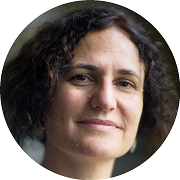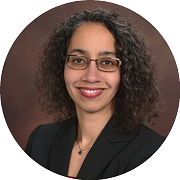- About MAA
- Membership
- MAA Publications
- Periodicals
- Blogs
- MAA Book Series
- MAA Press (an imprint of the AMS)
- MAA Notes
- MAA Reviews
- Mathematical Communication
- Information for Libraries
- Author Resources
- Advertise with MAA
- Meetings
- Competitions
- Programs
- Communities
- MAA Sections
- SIGMAA
- MAA Connect
- Students
- MAA Awards
- Awards Booklets
- Writing Awards
- Teaching Awards
- Service Awards
- Research Awards
- Lecture Awards
- Putnam Competition Individual and Team Winners
- D. E. Shaw Group AMC 8 Awards & Certificates
- Maryam Mirzakhani AMC 10 A Awards & Certificates
- Two Sigma AMC 10 B Awards & Certificates
- Jane Street AMC 12 A Awards & Certificates
- Akamai AMC 12 B Awards & Certificates
- High School Teachers
- News
You are here
Invited Addresses


Earle Raymond Hedrick Lecture Series
Nonlinear Dispersive Equations and the Beautiful Mathematics That Comes with Them
Lecture 1: Thursday, August 2, 11:00 a.m. – 11:50 a.m., Plaza Ballroom A, B, & C, Plaza Building
Lecture 2: Friday, August 3, 10:30 a.m. – 11:20 a.m., Plaza Ballroom A, B, & C, Plaza Building
Lecture 3: Saturday, August 4, 10:00 a.m. – 10:50 a.m., Plaza Ballroom A, B, & C, Plaza Building
Gigliola Staffilani, Massachusetts Institute of Technology
image by Bryce Vickmark
Abstract
In these lectures I will give an overview of the rich mathematical structures that characterize the wave solutions of some of the most important nonlinear partial differential equations, such as the Schrödinger equation. In doing so I will illustrate how beautiful pieces of mathematics, developed using different tools, not just coming from analysis, have been generated over the years in order to answer some of the most fundamental questions for these equations, such as existence and uniqueness of solutions for example. Along the way I will formulate open questions and possible new directions of investigation.
Gigliola Staffilani Bio
Gigliola Staffilani is the MIT Abby Rockefeller Mauze' Professor of Mathematics since 2007. She received the B.S. equivalent from the University of Bologna in 1989, and the M.S. and Ph.D. degrees from the University of Chicago in 1991 and 1995. Following a Szego Assistant Professorship at Stanford, she had faculty appointments at Stanford, Princeton and Brown, before joining the MIT mathematics faculty in 2002. At Stanford, Professor Staffilani received the Harold M. Bacon Memorial Teaching Award in 1997, and was given the Frederick E. Terman Award for young faculty in 1998. She was a member of the Institute for Advanced Study in 1995-96 and again in 2003-04. She was a Sloan Fellow from 2000-02 and a Fellow at the Radcliffe Institute for Advanced Study at Harvard in 2009-10. In 2013 she became an AMS Fellow and a member of the Massachusetts Academy of Sciences. In 2014 she was inducted into the American Academy of Arts and Sciences. In 2017 she received a Guggenheim Fellowship and a Simons Fellowship. In 2017 she also received an inaugural MITx Prize for Teaching and Learning in MOOCs.

AMS-MAA Joint Invited Address
Gravity's Action on Light: A Mathematical Journey
Thursday, August 2, 10:00 a.m. – 10:50 a.m., Plaza Ballroom A, B, & C, Plaza Building
Arlie Petters, Duke University
Abstract
The gravitational fields of stars, black holes, and galaxies act on light propagating near them, casting magnification patterns in space. Such optical phenomena have wide-ranging physical applications, including detecting extrasolar planets and testing for a fifth dimension of the universe. Assuming no background in astrophysics or cosmology, this talk will take you on a mathematical journey unveiling the intriguing properties of these beautiful magnification patterns.

MAA Invited Address
Inclusion-exclusion in Mathematics: Who Stays in, Who Falls out, Why It Happens, and What We Should Do About It
Friday, August 3, 11:30 a.m. - 12:20 p.m., Plaza Ballroom A, B, & C, Plaza Building
Eugenia Cheng, School of the Art Institute of Chicago
Abstract
The question of why women are under-represented in mathematics is complex and there are no simple answers, only many contributing factors. I will focus on character traits, and argue that if we focus on this rather than gender we can have a more productive and less divisive conversation. To try and focus on characters rather than genders I will introduce gender-neutral character adjectives "ingressive" and "congressive" to replace masculine and feminine. I will share my experience of teaching congressive abstract mathematics to art students, in a congressive way, and the possible effects this could have for everyone in mathematics, not just women. I will present the field of Category Theory as a particularly congressive subject area, accessible to bright high school students, and contrast it with the types of math that are often used to push or stimulate those students. No prior knowledge will be needed.
Eugenia Cheng Bio
Eugenia Cheng is a mathematician and concert pianist. She is Scientist In Residence at the School of the Art Institute of Chicago and won tenure at the University of Sheffield, UK. She has previously taught at the universities of Cambridge, Chicago and Nice and holds a PhD in pure mathematics from the University of Cambridge. Alongside her research in Category Theory and undergraduate teaching her aim is to rid the world of "maths phobia". Eugenia was an early pioneer of maths on YouTube and her videos have been viewed over 10 million times to date. She has also assisted with mathematics in elementary, middle and high schools for 20 years. Her first popular maths book "How to Bake Pi" was featured on the Late Show with Stephen Colbert, and "Beyond Infinity" was shortlisted for the Royal Society Science Book Prize 2017. She also writes the Everyday Math column for the Wall Street Journal, and recently completely her first mathematical art commission, for Hotel EMC2 in Chicago. She is the founder of the Liederstube, an intimate oasis for art song based in Chicago. Her next book, "Thinking Better: The Art of Logic in an Illogical World" is due out in 2018.

MAA Invited Address
Snow Business: Scientific Computing in the Movies and Beyond
Saturday, August 4, 11:00 a.m. - 11:50 a.m., Plaza Ballroom A, B, & C, Plaza Building
Joseph Teran, University of California Los Angeles
Abstract
New applications of scientific computing for solid and fluid mechanics problems include simulation of virtual materials in movie visual effects and virtual surgery. Both disciplines demand physically realistic dynamics for materials like water, smoke, fire, and soft tissues. New algorithms are required for each area. Teran will speak about the simulation techniques required in these fields and will share some recent results including: simulated surgical repair of biomechanical soft tissues; extreme deformation of elastic objects with contact; high resolution incompressible flow; and clothing and hair dynamics. He will also discuss a new algorithm used for simulating the dynamics of snow in Disney’s animated feature film, “Frozen”.

MAA Invited Address
Mathematical Medicine: Modeling Disease and Treatment
Thursday, August 2, 9:00 a.m. - 9:50 a.m., Plaza Ballroom A, B, & C, Plaza Building
Lisette de Pillis, Harvey Mudd College
Abstract
Immune system dynamics have proven to play an increasingly central role in the development of new treatment strategies for immune-related diseases such as type 1 diabetes and certain cancers. The critical importance of the immune system in fighting such diseases has been verified clinically, as well as through mathematical models.
Many open questions remain, however, including what may lead to non-uniform patient responses to treatments, and how to optimize and personalize therapy strategies. Mathematical models can help to provide insights into the mechanisms that may be influencing patient outcomes. In this talk, we will present a sampling of mathematical models that help us to simulate immune system interactions, disease dynamics, and treatment approaches that may slow, or even stop, disease progression.

MAA James R.C. Leitzel Lecture
The Relationship between Culture and the Learning of Mathematics
Saturday, August 4, 9:00 a.m. - 9:50 a.m., Plaza Ballroom A, B, & C, Plaza Building
Talitha Washington, Howard University and National Science Foundation
Click here to view the slides from this lecture
Abstract
How do we ensure that our mathematics is culturally inclusive? Why have issues with minority participation not been resolved? Unfortunately, even with our best intentions, our implicit biases impact the mathematics we teach and learn. We all can take an active role to ensure the strength of our future mathematical community, which should also be a reflection of our Nation. I will share how to infuse various cultures in learning mathematics that can better help educate those of diverse backgrounds which will broaden the participation of those doing mathematics.
Talitha Washington Bio
Dr. Talitha Washington is a tenured Associate Professor of Mathematics at Howard University. She joined the National Science Foundation (NSF) in August of 2017 as a Program Officer in the Division of Undergraduate Education. She enjoys applying mathematics to understand and solve real-world problems, as well as the development of nonstandard finite difference schemes to numerically solve dynamical systems.
After completing her bachelor’s degree in mathematics from Spelman College, she went on to become the first African American to earn a doctorate in mathematics from the University of Connecticut. She was a Research Associate in the Department of Mathematics at Duke University. She held assistant professorships at The College of New Rochelle and the University of Evansville, and most recently, an associate professorship at Howard University. She also serves on the Council of the American Mathematical Society (AMS).

AWM-MAA Etta Zuber Falconer Lecture
Finding Ellipses
Friday, August 3, 9:30 a.m. - 10:20 a.m., Plaza Ballroom A, B, & C, Plaza Building
Pamela Gorkin, Bucknell University
Abstract
Ellipses make frequent appearances in our lives: Kepler’s laws of planetary motion involve ellipses and a medical procedure involving kidney stones known as lithotripsy uses them as well. We see ellipses in architecture and in President’s Park South we find a park called simply “The Ellipse.” What properties of the ellipse make it so important? How can we construct an ellipse? We begin with questions like these, providing some unfamiliar answers. Then we study three seemingly unrelated problems in mathematics, chosen from linear algebra, complex analysis, and projective geometry, and we show how the solution to each of these problems relies on finding ellipses.

MAA Chan Stanek Lecture for Students
FAIL: A Mathematician's Apology
Thursday, August 2, 1:30 p.m. - 2:20 p.m., Plaza Ballroom A, B, & C, Plaza Building
Laura Taalman, James Madison University
Abstract
The job of being a mathematician primarily consists of long periods of failure punctuated by short bursts of success which later seem to be somewhat obvious...but that’s what we love about it! And, as it turns out, 3D printing kind of works the same way. In this talk we’ll take a journey through many mathematical and 3D printing failures and try to laugh about it the best we can.
Laura Taalman Bio
Laura Taalman is a Professor of Mathematics at James Madison University whose research has included algebraic geometry, knot theory, and games. Dr. Taalman also publishes Calculus textbooks and Sudoku puzzle books, blogs at Hacktastic and Shapeways, and designs and shares hundreds of models with the 3D printing community, where she is known as “mathgrrl”. She consults for 3D printing companies as an “expert amateur”, a completely real thing which here means “a person who is good at doing things that they aren’t particularly good at.” Dr. Taalman is a Project NExT Fellow, a recipient of the Alder Award, Trevor Evans Award, and SCHEV Outstanding Faculty Award, and has been featured on Thingiverse, Adafruit, and Science Friday.

Pi Mu Epsilon J. Sutherland Frame Lecture
The Singular Uniformity of Large Random Systems
Wednesday, August 1, 8:00 p.m. - 8:50 p.m., Plaza Ballroom A, B, & C, Plaza Building
Peter Winkler, Dartmouth College
Abstract
A random structure could be anything, yet somehow, when that structure is composed of many small parts, it often turns out to be shockingly predictable — at least, in a probabilistic sense. A random graph on a million vertices, for example, has a long list of characteristics each with high probability.
In an attempt to understand this phenomenon, we'll take a little tour from zero-one laws to variational principles, contrasting graphs and permutations along the way.

NAM David Harold Blackwell Lecture
Continuous, Discrete, or Somewhere in Between: An Introduction to Time Scales with Applications
Friday, August 3, 1:30 p.m. - 2:20 p.m., Plaza Ballroom A, B, & C, Plaza Building
Raegan Higgins, Texas Tech University
Abstract
Since Stefan Hilger's landmark paper in 1988, progress has been made in the unification and extension of discrete and continuous analysis. The broad idea is to prove a result once for a dynamic equation where the domain of the unknown function is a time scale \(\mathbb{T}\), which is an arbitrary, nonempty, closed subset of the real numbers.
In this talk, we will use the exponential function \(e^{pt}\) to introduce the theory of time scales. Considering a certain second-order linear delay dynamic equation, we establish some sufficient conditions which ensure that every solution oscillates. The obtained results unify the oscillation of second-order delay differential and difference equations.
Our interest in delay equations has lead us to study a certain area of mathematical physiology. We are using mathematical models to understand how behavioral disruption of the circadian clock can lead to glucose dysregulation. In this talk, we present some preliminary results.
Year:
2018





